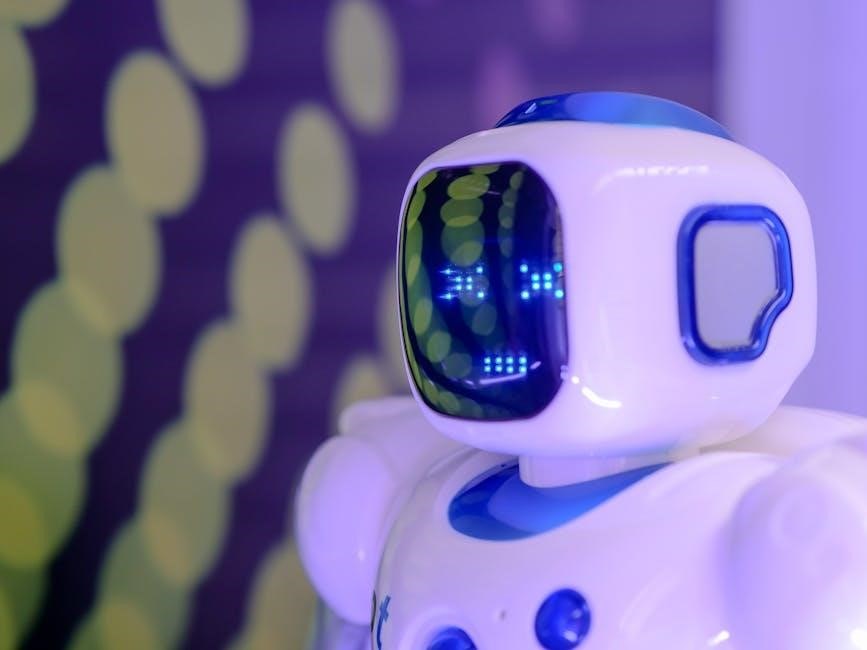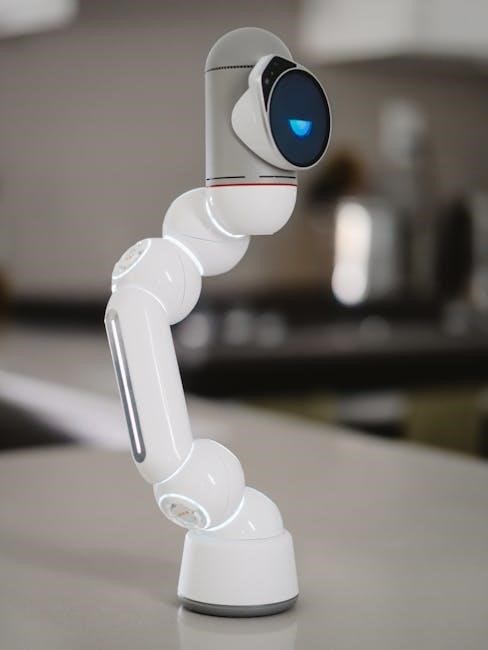Overview of Smart Bird Feeders
Smart bird feeders are innovative devices that combine technology and nature, allowing users to monitor and interact with bird species in their surroundings. These feeders are equipped with advanced features such as cameras, sensors, and artificial intelligence, enabling them to recognize and identify different bird species. The use of smart bird feeders has become increasingly popular among birdwatching enthusiasts and conservationists, as they provide valuable insights into bird behavior and population dynamics. By utilizing smart bird feeders, users can contribute to the conservation of bird species and enhance their overall birdwatching experience. Additionally, smart bird feeders can be easily installed and maintained, making them a convenient and user-friendly option for anyone interested in birdwatching and wildlife conservation, with many models available on the market, offering various features and functionalities. Overall, smart bird feeders are a great way to connect with nature and promote conservation efforts.

Features of Smart AI Recognition Bird Feeders
Smart AI recognition bird feeders have advanced features like cameras and sensors for optimal performance always online with great efficiency and accuracy every time.
Camera and Sensor Technology
The camera and sensor technology used in smart AI recognition bird feeders is highly advanced, allowing for accurate and efficient bird species recognition.
These cameras and sensors work together to capture high-quality images and detect various bird species, providing users with valuable insights into the birds visiting their feeders.
The technology used is designed to be durable and weather-resistant, ensuring that it can withstand various environmental conditions and continue to function effectively;
Additionally, the camera and sensor technology is often powered by rechargeable batteries, making it a convenient and sustainable option for bird enthusiasts.
Overall, the camera and sensor technology used in smart AI recognition bird feeders is a key component of their functionality, enabling users to enjoy a unique and interactive birdwatching experience.
AI-Powered Bird Recognition
The AI-powered bird recognition technology used in smart feeders is capable of identifying over 12,000 bird species, making it a powerful tool for bird enthusiasts.
This technology uses advanced algorithms and machine learning to analyze images captured by the camera, providing accurate and reliable species identification.
The AI system is constantly learning and improving, allowing it to recognize new species and improve its accuracy over time.
The AI-powered bird recognition technology is also able to record and store data on the birds that visit the feeder, providing users with valuable insights into bird behavior and population trends.
Overall, the AI-powered bird recognition technology is a key feature of smart AI recognition bird feeders, enabling users to enjoy a unique and interactive birdwatching experience and contributing to bird conservation efforts.

Setting Up Your Smart AI Recognition Bird Feeder
Setting up smart bird feeder involves installing and charging the device, following manufacturer instructions carefully always online using cameras and sensors effectively.
Installation and Charging
Installing and charging the smart bird feeder is a straightforward process that requires attention to detail to ensure proper functioning. The device comes with a comprehensive manual that outlines the steps involved in setting it up. It is essential to follow the manufacturer’s instructions carefully to avoid any damage to the device. The feeder is equipped with a rechargeable battery that can be charged using a USB cable, and it is recommended to charge it for at least 2 hours before first use. The installation process involves mounting the feeder in a suitable location, such as a tree branch or a hook, and adjusting the camera angle to capture clear images of the birds. By following the manufacturer’s instructions and taking the necessary precautions, users can ensure a successful installation and charging process. This will enable them to start using the smart bird feeder immediately.
Configuring the AI Recognition System
Configuring the AI recognition system is a crucial step in setting up the smart bird feeder. The system uses advanced algorithms to identify and classify bird species, and it requires some initial setup to function accurately. The user needs to access the feeder’s settings through a mobile app or web interface and select the desired configuration options. This includes choosing the region and language, as well as adjusting the sensitivity of the camera and sensor. The system also allows users to update the AI software and add new bird species to the database. By configuring the AI recognition system correctly, users can ensure accurate and reliable identification of bird species, and gain a deeper understanding of the birds that visit their feeder. The configuration process is relatively simple and can be completed in a few minutes.

Using Your Smart AI Recognition Bird Feeder
Utilize the smart feeder to identify and learn about various bird species visiting your yard with ease and convenience always online every day.
Monitoring and Identifying Bird Species
The smart feeder’s camera and AI technology allow for seamless monitoring and identification of bird species, providing users with a unique opportunity to learn about and appreciate the various birds visiting their yard. With the ability to recognize over 10,000 bird species, the smart feeder is an invaluable tool for bird enthusiasts and conservationists alike. The feeder’s advanced technology enables it to automatically record and identify the birds, providing users with a comprehensive database of the species that visit their yard. This information can be used to gain a deeper understanding of the local bird population and to inform conservation efforts. By using the smart feeder, users can contribute to the preservation of bird species and their habitats, while also enhancing their own birdwatching experience. The smart feeder’s monitoring and identification capabilities make it an essential tool for anyone interested in birds and conservation.
Accessing and Sharing Bird Recognition Data
The smart feeder’s data can be easily accessed and shared through a user-friendly interface, allowing bird enthusiasts to track and analyze the bird species that visit their yard. The data can be viewed on a computer or mobile device, and can be shared with others through social media or email. This feature enables users to connect with other birdwatchers and share their experiences, creating a sense of community and collaboration. The smart feeder’s data can also be used to contribute to citizen science projects, helping to advance our understanding of bird behavior and conservation. By sharing their data, users can help to inform conservation efforts and make a positive impact on the environment. The smart feeder’s data access and sharing capabilities make it a valuable tool for bird enthusiasts and conservationists. Users can access and share data at any time, making it a convenient and useful feature.

Troubleshooting and Maintenance
Troubleshooting and maintenance tips ensure optimal performance of smart bird feeders always online.
Common Issues and Solutions
Common issues with smart bird feeders include camera malfunction, sensor errors, and AI recognition problems, which can be resolved by restarting the device, checking connections, and updating software.
The user manual provides troubleshooting guides and FAQs to help resolve issues quickly and easily, ensuring minimal disruption to birdwatching activities.
Regular maintenance, such as cleaning the camera and sensors, can also help prevent issues and ensure optimal performance.
Additionally, manufacturers often provide customer support and online resources to help users troubleshoot and resolve issues, making it easier to enjoy the benefits of smart bird feeders.
By following these tips and guidelines, users can minimize downtime and maximize their birdwatching experience, enjoying the many benefits of smart AI recognition bird feeders.
Overall, common issues can be easily resolved with the right guidance and support, allowing users to focus on enjoying their birdwatching hobby.
Regular Maintenance and Updates
Regular maintenance is essential to ensure the optimal performance of smart AI recognition bird feeders, including cleaning the camera and sensors, and checking for software updates.
The user manual provides guidelines on how to perform routine maintenance tasks, such as cleaning the device and checking for firmware updates.
Manufacturers often release software updates to improve the performance and functionality of the bird feeder, and users can update their device through the mobile app or website.
Regular maintenance can help prevent issues and ensure that the bird feeder continues to function correctly, providing accurate bird recognition and high-quality images.
By following the recommended maintenance schedule, users can extend the lifespan of their smart bird feeder and enjoy uninterrupted birdwatching experiences.
Regular updates and maintenance can also help to improve the overall user experience, adding new features and functionality to the device.